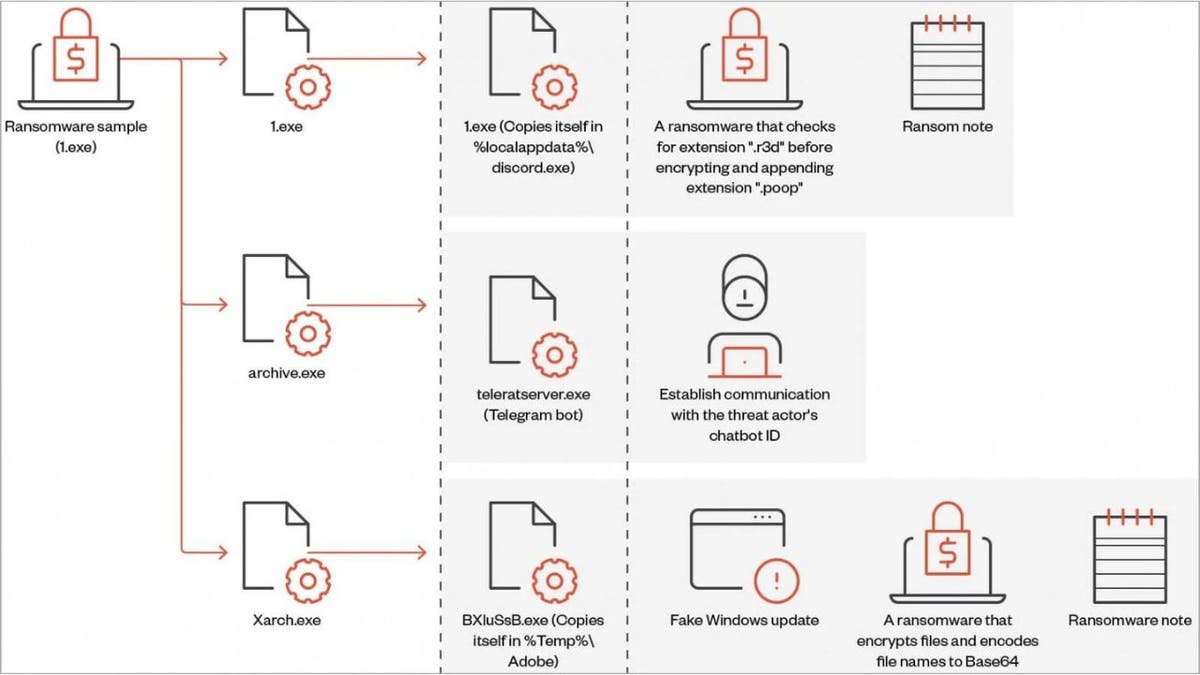A new threat is circulating online, masking itself as a harmless Windows update. This ransomware, dubbed "Big Head," is spreading through deceptive online advertisements and has already impacted users primarily in the U.S., France, Turkey, and Spain. How can you safeguard your data from this cunning attack?
How Big Head Ransomware Works
Big Head ransomware uses a clever disguise – a fake Windows update alert. Upon clicking this deceptive alert, the ransomware initiates its attack. It systematically deletes backups, disables Task Manager to hinder removal, and encrypts your files, effectively holding your data hostage. Variants of Big Head have also been observed stealing sensitive data, including browsing history, directory lists, running processes, product keys, and network information.

Diagram illustrating the process of a Big Head ransomware attack. (Trend Micro)
Effective Strategies to Protect Yourself from Ransomware
While paying the ransom might seem like a solution, it doesn't guarantee file recovery and only encourages further criminal activity. Proactive prevention is the best defense. Here's how to protect yourself:
Be Wary of Suspicious Emails
Exercise caution with emails from unfamiliar senders. Avoid opening them altogether, and never click on links or attachments within such emails. This is a common tactic used by cybercriminals to spread malware.
Invest in Robust Antivirus Software
Strong antivirus software is crucial for blocking malicious links and detecting existing malware. It acts as a gatekeeper, preventing you from inadvertently installing harmful programs. Regularly update your antivirus software to ensure it has the latest threat definitions.
Back Up Your Files Offline
Regularly back up your data to an external hard drive and store it offline, disconnected from your computer. This prevents the ransomware from encrypting your backups. Consider storing the disconnected drive in a secure location like a fireproof safe or a safety deposit box.
Consider Cloud Storage, but with Caution
Cloud storage offers convenient accessibility and scalability, but remember that your data resides on third-party servers. While reputable cloud services implement security measures, data breaches can occur. Choose a trusted cloud provider and enable two-factor authentication for enhanced security.
Keep Your Software Updated
Regularly update your operating system, antivirus software, web browsers, and other applications. These updates often include critical security patches that protect against known vulnerabilities.
Key Takeaways
Ransomware attacks like Big Head highlight the importance of vigilance. Be cautious about clicking links and opening attachments, especially from unknown sources. Implementing these preventive measures can significantly reduce your risk of becoming a victim of ransomware.








